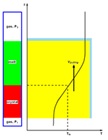
Floricica Barvinschi
Politehnica University Timisoara, Romania
Title: Numerical modeling of transport phenomena during the solidification of materials
Biography
Biography: Floricica Barvinschi
Abstract
Statement of the Problem: A method for the Vertical Bridgman (VB) solidification of InSb in a silica ampoule is modeled with COMSOL Multiphysics software, using time-dependent thermal conditions. Axial-symmetric numerical simulations of temperature, velocity field in the melt, under normal gravity, and capillarity at the melt-gas-crucible interface resemble those used in an induced pressure difference dewetting VB configuration. The VB technique has some drawbacks that are linked to the use of a crucible in intimate contact with the growing crystal. Methodology & Theoretical Orientation: In order to avoid the sticking of the crystal on the crucible, which can result in crystal or crucible breakage, a pressure difference is built up inside a sealed growth ampoule by a temperature variation. Detached growth is a small gap between the growing crystal and the crucible wall. The contact-free growth reduces mechanical stress in the crystal, resulting in a reduction of the defect density. Findings: In the present paper we extend our previous steady-state model by including the calculation of the energy, momentum and mass transport, plus the interfacial phenomena at the melt-gas-crucible interface, under normal gravity, while applying a time dependent step-type temperature distribution on the outer part of the crucible. Conclusion & Significance: Several systematically studies on this subject have been reported during time, both experimental and numerical. In order to model the flow of two different, immiscible fluids, where the exact position of the interface is of interest, we have applied the phase-field method. The purpose of this study is to include in a single model the transport phenomena (energy, momentum, mass) and the interfacial phenomena at the melt-crystal-crucible and respectively melt-gas-crucible interfaces. All these new models were developed numerically. The validation of modeling was made by comparing Lamine Sylla`s results, reported in his PhD thesis.

Figure 1: Vertical Bridgman model and transient boundary conditions.
Recent Publications
1. Barvinschi P, Barvinschi F (2011) Coupled Heat Transfer and Fluid Dynamics Modeling of InSb Solidification. AIP Conference Proceedings 1387:190-197.
2. Sylla L (2008) Etude Experimentale et Thermodynamique du Procédé de Démouillage Appliqué aux Semiconducteurs. PhD Thesis INP Grenoble France.
3. Duffar T (Ed.) (2010) Crystal Growth Processes Based on Capillarity. Czochralski. Floating Zone. Shaping and Crucible Techniques J. Wiley & Sons Ltd. Chichester UK.
4. Barvinschi B, Barvinschi P (2015) Numerical investigation of crystal growth in a vertical Bridgman configuration using a mushy zone model. JOAM 17 (3-4): 431-438.
5. Gallien B, Sylla L, Bengulescu M, Barvinschi F, Duffar T (2013) Study of crystal-crucible detachment: GaSb in SiO2. CrystEngCom 15: 2329-2336.
6. Stelian C, Yeckel A, Derby J J (2009) Influence of thermal phenomena on crystal reattachment during dewetted Bridgman growth. J.Cryst.Growth 311: 2572-2579.
Acknowledgments: This work was supported in part by the strategic grant POSDRU/21/1.5/G/13798, inside POSDRU Romania 2007-2013, co-financed by the European Fund-Investing in People.

